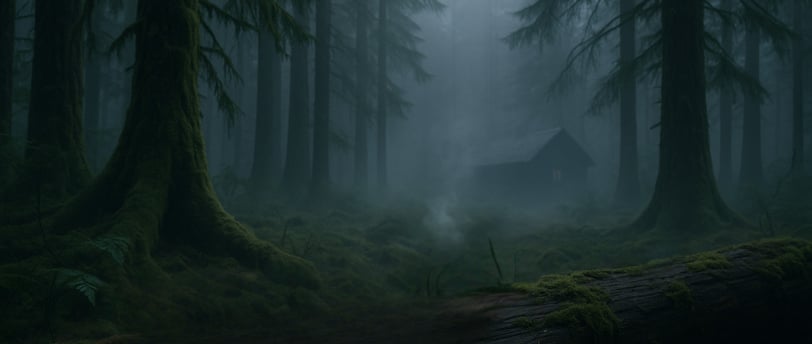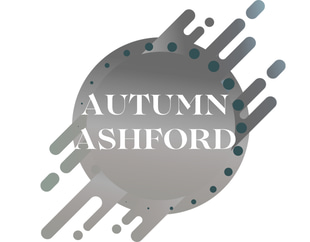Mist Rising Off the Cedars: How the Pacific Northwest Fuels My Mystery Musings
A little insight on how the Pacific Northwest’s moody forests, shifting weather, and tight-lipped small towns fuel every twist in my novels.
Autumn Ashford
7/6/20253 min read


Most mornings I’m up before the sun, mug of dark roast in hand, watching low clouds drift like ghosts between the Douglas firs behind my cabin. Those gray-blue wisps feel alive, sliding through the branches as if they have secrets to share, exactly the kind of secrets a mystery author loves to unravel.
Living here, in Washington’s temperate rain-bathed stretch of coastline, the setting does half the storytelling for me. The hush of the forest, the ebb and crash of the tide, even the cry of a bald eagle overhead: each sensory note lands on the page. When my amateur sleuth trudges along a moss-slick logging road at dusk, my own boots have squelched through that same mud. Authentic atmosphere is inevitable when your backyard already looks like a cover for a suspense novel.
Back in college I learned that weather can function as character, shaping tone and tension. Now I don’t need to manufacture it, I just open the door.
One morning might dawn crystalline, with sunlight shimmering off Puget Sound. By lunchtime, without warning, the sky sours to pewter, mist thick enough to erase the horizon. That sudden switch from serenity to uncertainty is pure mystery gold. Readers feel the rug pulled out from under them, because I felt it first on my own skin: goose bumps rising as wind rattles red cedar needles like dry bones. Every storm that barrels in from the Pacific offers a ready-made mood board for suspense.
The peninsula is dotted with sleepy hamlets where shopkeepers greet you by name, and the local bakery still sells donuts for a dollar. Picturesque? Absolutely. But any long-time resident knows that “quaint” rarely means “quiet.”
Gossip ripples faster than tidewater through oyster beds, binding neighbors in invisible nets of obligation and history. When I write about secret affairs, decades-old grudges, or the complicated line between neighborly kindness and watchful suspicion, I’m channeling lived experience. Not every small-town rumor becomes a murder motive, but enough have proven combustible to keep my fictional Port Whisper thriving.
Mystery isn’t only forged in shadows; it’s woven from stories layered over centuries. Coast Salish oral traditions still shimmer beneath the modern veneer of waterfront hotels and tech start-ups.
Meanwhile, the indie coffeehouses of Seattle’s Ballard neighborhood provide a different flavor of intrigue. Baristas double as poets, coders, or musicians, each nursing a dream, and possible alibi. I sketch characters at window seats, soaking in cinnamon-cardamom steam, eavesdropping on debates about wild-foraged mushrooms or the best surf breaks on the Olympic Peninsula. Real dialogue beats invented dialogue every time.
Readers often ask why I don’t invent a vague “anywhere” setting and spare myself mapping real terrain. My answer: in a mystery, clues hide in the environment as much as in motive or means. A tide table reveals opportunity; a mountain pass traps suspects; a historic lighthouse conceals tunnels older than memory. When readers sense that every moss-covered stone exists beyond the page, the puzzle feels more tangible, and the stakes higher.
Yes, the jokes about soggy Seattleites are true: we measure seasons in varieties of precipitation. Those long drizzly stretches cultivate discipline. I write to a soundtrack of pattering raindrops on a cedar-shingled roof, candles lit even at noon, loose-leaf black tea filling the cabin with smoke-sweet fragrance. Isolation becomes incubation; solitude sharpens focus.
And when sunshine finally breaks through, I close the laptop and chase it, paddle-boarding across glassy lakes or foraging for huckleberries. Refilling the creative well is literal here; you get drenched, then you dry out, and the cycle spins new stories.
If you’ve ever dreamed of mist-veiled forests and tide-scoured coves, places where beauty and danger entwine, I invite you to wander them through my novels. The Pacific Northwest isn’t just background color; it’s the beating heart of every puzzle I craft.
Next time you crack open one of my mysteries, listen for distant loon calls, feel cedar bark rough beneath your fingertips, taste salt spray on your lips. That’s this corner of the world speaking through the page, sometimes in whispers, sometimes in screams, always begging the question: What secrets lie just beyond the tree line?
Pack a rain jacket, dear reader. Adventure (and perhaps a corpse or two) awaits beneath the towering evergreens.
